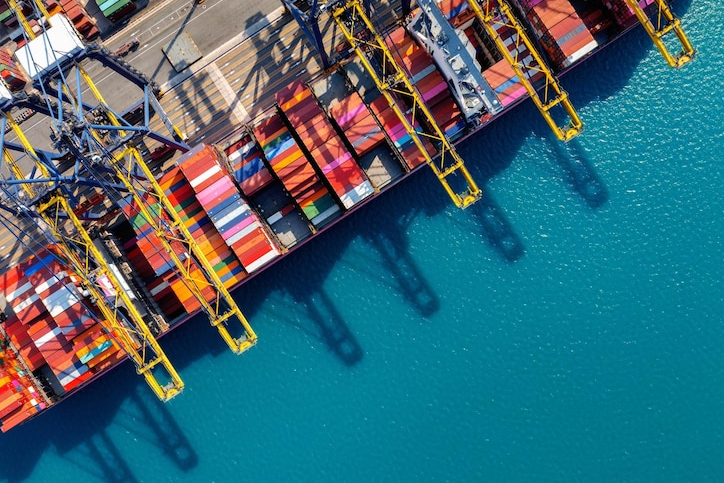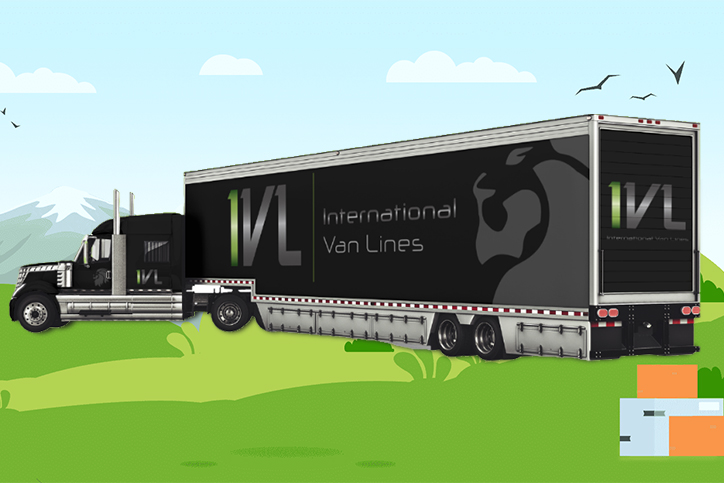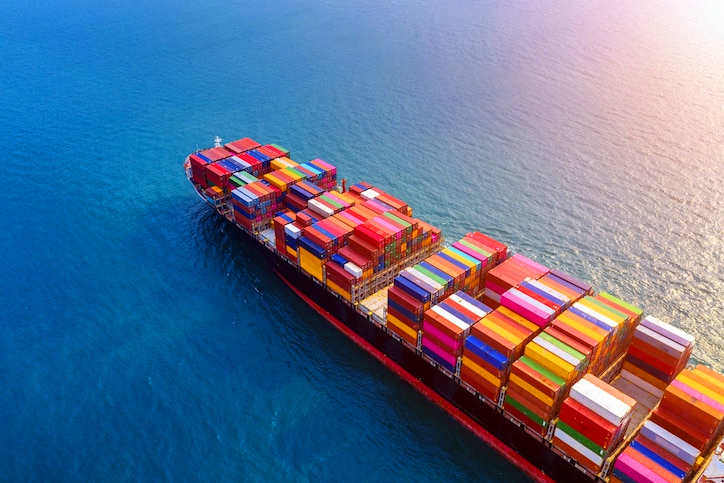Container shipping has been around for over 50 years, and the International Organization for Standardization spearheaded its standardization shortly after (ISO). But have you ever wondered, “how does container shipping work?” We at International Van Lines will provide you with some in-depth information regarding container shipping.
What Are Shipping Containers?

Strong metal boxes, called shipping containers, move items from one location to another. Usually constructed of steel, they are strong enough to endure lengthy shipments.
Standardized containers have revolutionized the shipping and transportation sectors, making it simple to transfer products by rail, road, and ship. This is because the containers are designed to fit onto various modes of transportation. Transporting the over $3 trillion worth of goods that pass through our transportation systems every year, from aerosol cans to zebras, has become more efficient and cost-effective because of container standardization.
What Are The Various Shipping Container Size Available?
You may utilize them in rail, ship, and road transportation by maintaining sizes to a specific standard.
6 Different Sorts Of Shipping Containers
-
Dry Storage Containers
There are the typical door-to-door container shipping for dry goods previously described. Typically, they are 10 feet, 20 feet, or 40 feet long.
-
Flat Rack Containers
These have foldable, collapsible sides. They are perfect for transporting vehicles, goods, and boats.
-
Open Side Containers
This design allows the container doors to be opened on the side, enabling greater material loading. They are perfect for carrying veggies because of their structure.
-
Open Top Containers
As implied by the title, the lack of a roof on these containers allows for shipping items of any height. They are, therefore, perfect for objects like equipment or logs.
-
Refrigerated Containers
The containers in question are chilled. They are perfect for medicinal products or food stock.
-
Tanks
These are made to hold liquids (including fuels).
How Is Cargo Transported In Containers?
Full Container Load (FCL) and Less-than-container Load (LCL), sometimes known as break bulk shipping, are the two methods of container packing.
Consider a less-than-container load shipment if you’re looking to import a small amount of merchandise that might not need a full container’s worth of stock. In this type of shipment, a shipping agent or freight forwarder will combine your supplier’s products with other vendors to create a full shipment. The cost per kilogram is higher than the cost of a full container load, but the overall delivery cost will be lower.
Pallets (or skids), which are frequently constructed of wood or plastic and serve as supports for the load, are frequently shrink-wrapped, and plastic slip sheets or crates are other common forms of packing used inside containers for transporting goods into and out of them.
What Are The Documentations Required For Shipping Container?
The Bill of Lading, which is effectively the shipping contract, and the Freight Bill are the two most crucial pieces of shipping documents (and frequently the basis of freight forwarder quotations) (the invoice for the cost of shipping the goods from A to B).
In essence, the buyer has two options for delivery: either use the seller’s freight forwarder or arrange for their freight agency and delivery (possibly incurring some form of markup or cost).
Typically, when shipping products, suppliers provide an estimate for an ExWorks or Free on Board transit service.
What Are The Procedures In Shipping Containers?

-
Placing Order
A customer will place an order with a manufacturer and coordinate transportation from the manufacturer’s location to their own with the help of a freight forwarder. Top container shipping companies may be required, depending on where these places are.
-
Trucks Loaded
Most firms only have road access, which necessitates loading their products onto trucks and driving them to their final destination or the closest port.
-
Ship Loaded
The freight forwarder will normally determine the optimal route from point A to point B. This could be the fastest or the most cost-effective option. In any case, a container ship’s next leg of the voyage often involves loading onto a ship that will transport it to the target nation.
-
Transport
This portion is rather straightforward: the ship travels from the first port to the second port while carrying the cargo. The captain or another shipping company representative will need to transmit information on the ship and its cargo to the destination country’s authorities along the trip.
-
Arrived
The container ship arrives at a berth close to substantial cranes that will unload the cargo containers as soon as it receives permission to enter the port.
-
Offloading The Containers
As many as 100 dockworkers per vessel might arrive at the port to work on the ship. This group includes crane operators, lashers, clerks, and cargo equipment.
-
Customs Clearance
Customs agents may choose a few containers for further scrutiny after carefully examining the documentation for each container.
-
Pickup
The container is put onto a customized truck trailer or chassis once customs approve it so it is delivered to the distribution center. Trains are frequently move containers when the destination is distant from the port.
-
Final Delivery
After that, a vehicle picks it up at the port and drives it to a distribution facility nearby. Upon opening the container, we separate the individual order packets before mailing. After this, it normally takes a few days for the original customer to get their order.
-
Contact Us
You may get your products from point A to point B with the assistance of International Van Lines’ network of freight forwarders, freight specialists, and shipping/logistics partners.
We hope this blog on “how does container shipping work” was helpful for you. For more info, follow us on International Van Lines!



